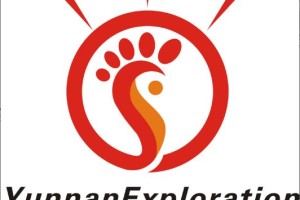
Yongxing Village of Shili Town in Fengqing County, Lincang
1. Overview and Ethnic Composition
- Administrative Affiliation:
Yongxing Village belongs to Shili Township, Fengqing County, Lincang City, Yunnan Province, and is listed in the 4th Batch of Chinese Traditional Villages. It comprises 5 villager groups with 252 households (1,108 people), all engaged in agriculture, and 450 laborers (360 in primary industries). - Ethnic Groups:
Fengqing County is multi-ethnic, with Han, Yi, Bai, Miao, and 19 other minorities. Given Shili Township’s proximity to Weishan Yi-Hui Autonomous County, Yongxing Village is likely Yi-majority, possibly mixed with Bai and others.
2. Historical Roots
- Yi Ethnicity:
The Yi people trace ancestry to the ancient Qiang tribes, migrating from the Dianchi and Qiongdu regions. The Nanzhao Kingdom (8th century) accelerated cultural integration, forming agrarian societies. - Bai Ethnicity:
Originating from indigenous洱海 groups and Di-Qiang tribes, the Bai consolidated during the Tang Dynasty (“Dafeng people”), heavily influenced by Han culture.
3. Cuisine
- Yi Specialties:
- Staple foods: Corn and buckwheat; bitter buckwheat cakes are iconic.
- Meat dishes: Tuotuo meat (boiled chunks with dip) and lamb hotpot for festivals.
- Bai Specialties:
- Preserved ham and pickles; Three-Course Tea (bitter, sweet, aftertaste) symbolizes hospitality.
- Local Delicacy:
Shili Ham, made from free-range pork, is a must-buy for tourists.
4. Traditional Attire
- Yi Clothing:
Liangshan-style garments feature right-lapel coats, wool capes, and pleated skirts in black/red/yellow, adorned with nature-inspired patterns (e.g., ferns, fire sickles). - Bai Clothing:
White-based outfits; women’s headdresses incorporate “wind-flower-snow-moon” motifs, with tie-dye (blue-white designs) as intangible cultural heritage.
5. Customs and Traditions
- Yi Practices:
- Rotating Wine: Sharing liquor in circles, symbolizing unity.
- Torch Festival (6/24 lunar): Fire-lit dances to ward off evil.
- Bai Practices:
- Raosanling: Spring prayer parades with singing.
- Benzhu Festival: Worship of village deities, featuring temple fairs.
6. Architecture
- Yi Dwellings:
Wooden-slab houses (Liangshan) or rammed-earth structures (southern Yunnan), adapted to mountainous climates. - Bai Dwellings:
“Three-Bay-One-Screen-Wall” layouts with intricate carvings, akin to Dali’s Noudeng Village.
7. Handicrafts
- Bai Silverware:
Heqing artisans craft tea sets and jewelry with renowned engraving techniques. - Yi Lacquerware:
Red/black/yellow-painted wooden bowls and cups, featuring religious motifs.
8. Language and Religion
- Languages:
Yi: Tibeto-Burman language branch, some use Yi script; Bai: Incorporates archaic Chinese, uses Han characters. - Religions:
Yi: Animism, rituals led by “Bimo” priests; Bai: Benzhu worship, blending Buddhism/Daoism.
9. Tourism Recommendations
- Festivals: Join the Torch Festival (July) or Benzhu fairs for ethnic performances.
- Food: Try Shili Ham, buckwheat cakes, or Yi-style meat feasts.
- Workshops: Visit silver studios or try tie-dye crafting.

 7 Days GolfingTour
7 Days GolfingTour
 8 Days Group Tour
8 Days Group Tour
 8 Days Yunnan Tour
8 Days Yunnan Tour
 7 Days Shangri La Hiking
7 Days Shangri La Hiking
 11 Days Yunnan Tour
11 Days Yunnan Tour
 6 Days Yuanyang Terraces
6 Days Yuanyang Terraces
 11 Days Yunnan Tour
11 Days Yunnan Tour
 8 Days South Yunnan
8 Days South Yunnan
 7 Days Tea Tour
7 Days Tea Tour
 8 Days Muslim Tour
8 Days Muslim Tour
 12 Days Self-Driving
12 Days Self-Driving
 4 Days Haba Climbing
4 Days Haba Climbing
 Tiger Leaping Gorge
Tiger Leaping Gorge
 Stone Forest
Stone Forest
 Yunnan-Tibet
Yunnan-Tibet
 Hani Rice Terraces
Hani Rice Terraces
 Kunming
Kunming
 Lijiang
Lijiang
 Shangri-la
Shangri-la
 Dali
Dali
 XishuangBanna
XishuangBanna
 Honghe
Honghe
 Kunming
Kunming
 Lijiang
Lijiang
 Shangri-la
Shangri-la
 Yuanyang Rice Terraces
Yuanyang Rice Terraces
 Nujiang
Nujiang
 XishuangBanna
XishuangBanna
 Spring City Golf
Spring City Golf
 Snow Mountain Golf
Snow Mountain Golf
 Stone Mountain Golf
Stone Mountain Golf




